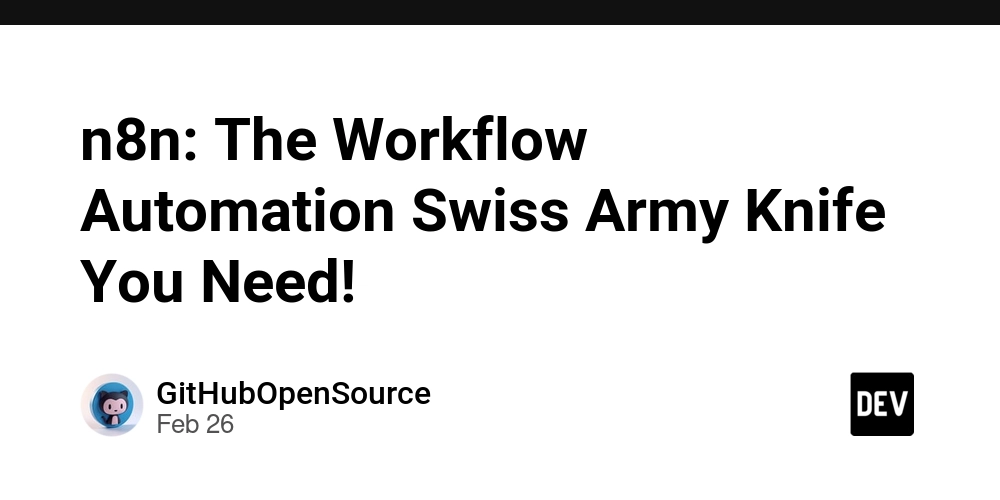Abusing AI: Most Compromised Weaknesses Pentesters Need to Know in 2025
Artificial Intelligence (AI) is everywhere in 2025—securing networks, driving web apps, and even autonomous cars. But here's the catch: AI is not infallible. As a pentester, we're in the ideal position to discover its weaknesses, attack them responsibly, and help construct more robust defenses. In this article, I will break down the most common AI vulnerabilities you should test for this year and how to address them. Let's dive in. 1. Data Poisoning: Contaminating the Core What It Is: AI learns from data. Feed it garbage—or craftily faked data—and it'll generate garbage decisions. Think about adding malicious entries to a training set so a security model flags legitimate users as threats. Why It’s a Threat: Companies often pull training data from untrusted sources (web scraping, anyone?). A smart attacker can poison it subtly, and the damage sticks until the model’s retrained. Pentesting It: If you’ve got access to an API or input pipeline, try injecting outliers or adversarial data. Watch how the system reacts—does it misclassify? Crash? Tools like Python with libraries (e.g., numpy or tensorflow) can help craft poisoned inputs. Real-World Fix: Programmers need rigorous data checks and source examination. As pentesters, we illustrate why. 2. Adversarial Attacks: Deceiving the Machine What It Is: Small alterations to inputs—like noise on a photo—that people won't notice but utterly bewilder AI. Imagine a stop sign a self-driving car interprets as "go" because of some intelligent pixels. Why It's a Threat: They exploit the difference in the way AI "observes" the world compared to us. They're fast, cheap, and devastating on image classification or NLP networks. Pentesting It: Use tools like Foolbox or CleverHans to generate adversarial examples. Try them out against APIs or endpoints that involve AI—think chatbots or facial recognition. Does the system break? Pro Tip: Start small. A 1% tweak might be enough to beat a classifier. 3. Model Theft: Brains' Theft What It Is: Question an AI a million times, and you can reverse-engineer its thought process or even clone it. It is like hacking into a pentesting book without breaking and out. Why It's a Threat: Companies invest millions in unique models. If hackers replicate them, they can use the vulnerabilities or sell the tech. Pentesting It: Hammer an API with structured requests and examine the outcomes. Tools like Burp Suite's "Repeater" can do that for you—map the model's decision boundaries and try to recreate it. Bonus points if you spot overfitting quirks. Defense Note: Rate limiting and obfuscation help, but tenacious pentesters (or attackers) can still break through. 4. No Patch, No Problem: The Unfixable Flaw What It Is: In contrast to a patchable SQL injection, most AI weaknesses are baked into the algorithms. Overdependence on black-box models means no Band-Aid solution—just retraining or rebuilding. Why It's a Threat: Companies implement AI without knowing how far it can go, leaving gaps that attackers can leverage indefinitely. Pentesting It: Stress-test the edge cases of the system. Feed it unexpected inputs (zero-length strings, gigantic datasets) and see if it chokes. Nmap or Metasploit might not be helpful here—try custom scripts instead. Takeaway: Have devs document their models' failure modes. Knowledge is half the battle. 5. AI vs. AI: The Automation Arms Race What It Is: Attackers are weaponizing AI to outpace human defenders—think AI-powered phishing or vulnerability scanners that evolve on the fly. Why It’s a Threat: It’s fast, scalable, and relentless. As pentesters, we’re up against our own tricks, supercharged. Pentesting It: Duplicate this by automating your own attacks. Use John the Ripper with an AI-generated wordlist or use reinforcement learning to optimize exploit attempts. Show clients how scary it is when the machines fight back. Reality Check: If attackers are doing it, we need to do it better—and ethically. Tools to Exploit AI Flaws Burp Suite: Great for intercepting and manipulating API calls to AI systems. Python + Libraries: TensorFlow, PyTorch, or Adversarial Robustness Toolbox for crafting attacks. Metasploit: Less direct, but useful for post-exploitation when AI sits on a network. Custom Scripts: AI’s quirks often demand bespoke solutions—get coding!

Artificial Intelligence (AI) is everywhere in 2025—securing networks, driving web apps, and even autonomous cars. But here's the catch: AI is not infallible. As a pentester, we're in the ideal position to discover its weaknesses, attack them responsibly, and help construct more robust defenses. In this article, I will break down the most common AI vulnerabilities you should test for this year and how to address them. Let's dive in.
1. Data Poisoning: Contaminating the Core
What It Is:
AI learns from data. Feed it garbage—or craftily faked data—and it'll generate garbage decisions. Think about adding malicious entries to a training set so a security model flags legitimate users as threats.
Why It’s a Threat:
Companies often pull training data from untrusted sources (web scraping, anyone?). A smart attacker can poison it subtly, and the damage sticks until the model’s retrained.
Pentesting It:
If you’ve got access to an API or input pipeline, try injecting outliers or adversarial data. Watch how the system reacts—does it misclassify? Crash? Tools like Python with libraries (e.g., numpy or tensorflow) can help craft poisoned inputs.
Real-World Fix:
Programmers need rigorous data checks and source examination. As pentesters, we illustrate why.
2. Adversarial Attacks: Deceiving the Machine
What It Is:
Small alterations to inputs—like noise on a photo—that people won't notice but utterly bewilder AI. Imagine a stop sign a self-driving car interprets as "go" because of some intelligent pixels.
Why It's a Threat:
They exploit the difference in the way AI "observes" the world compared to us. They're fast, cheap, and devastating on image classification or NLP networks.
Pentesting It:
Use tools like Foolbox or CleverHans to generate adversarial examples. Try them out against APIs or endpoints that involve AI—think chatbots or facial recognition. Does the system break?
Pro Tip:
Start small. A 1% tweak might be enough to beat a classifier.
3. Model Theft: Brains' Theft
What It Is:
Question an AI a million times, and you can reverse-engineer its thought process or even clone it. It is like hacking into a pentesting book without breaking and out.
Why It's a Threat:
Companies invest millions in unique models. If hackers replicate them, they can use the vulnerabilities or sell the tech.
Pentesting It:
Hammer an API with structured requests and examine the outcomes. Tools like Burp Suite's "Repeater" can do that for you—map the model's decision boundaries and try to recreate it. Bonus points if you spot overfitting quirks.
Defense Note:
Rate limiting and obfuscation help, but tenacious pentesters (or attackers) can still break through.
4. No Patch, No Problem: The Unfixable Flaw
What It Is:
In contrast to a patchable SQL injection, most AI weaknesses are baked into the algorithms. Overdependence on black-box models means no Band-Aid solution—just retraining or rebuilding.
Why It's a Threat:
Companies implement AI without knowing how far it can go, leaving gaps that attackers can leverage indefinitely.
Pentesting It:
Stress-test the edge cases of the system. Feed it unexpected inputs (zero-length strings, gigantic datasets) and see if it chokes. Nmap or Metasploit might not be helpful here—try custom scripts instead.
Takeaway:
Have devs document their models' failure modes. Knowledge is half the battle.
5. AI vs. AI: The Automation Arms Race
What It Is:
Attackers are weaponizing AI to outpace human defenders—think AI-powered phishing or vulnerability scanners that evolve on the fly.
Why It’s a Threat:
It’s fast, scalable, and relentless. As pentesters, we’re up against our own tricks, supercharged.
Pentesting It:
Duplicate this by automating your own attacks. Use John the Ripper with an AI-generated wordlist or use reinforcement learning to optimize exploit attempts. Show clients how scary it is when the machines fight back.
Reality Check:
If attackers are doing it, we need to do it better—and ethically.
Tools to Exploit AI Flaws
Burp Suite: Great for intercepting and manipulating API calls to AI systems.
Python + Libraries: TensorFlow, PyTorch, or Adversarial Robustness Toolbox for crafting attacks.
Metasploit: Less direct, but useful for post-exploitation when AI sits on a network.
Custom Scripts: AI’s quirks often demand bespoke solutions—get coding!











































































































































































![[The AI Show Episode 142]: ChatGPT’s New Image Generator, Studio Ghibli Craze and Backlash, Gemini 2.5, OpenAI Academy, 4o Updates, Vibe Marketing & xAI Acquires X](https://www.marketingaiinstitute.com/hubfs/ep%20142%20cover.png)




























































































































![[DEALS] The Premium Learn to Code Certification Bundle (97% off) & Other Deals Up To 98% Off – Offers End Soon!](https://www.javacodegeeks.com/wp-content/uploads/2012/12/jcg-logo.jpg)


![From drop-out to software architect with Jason Lengstorf [Podcast #167]](https://cdn.hashnode.com/res/hashnode/image/upload/v1743796461357/f3d19cd7-e6f5-4d7c-8bfc-eb974bc8da68.png?#)








































































































.png?#)

































_Christophe_Coat_Alamy.jpg?#)
 (1).webp?#)





































































































![Apple Considers Delaying Smart Home Hub Until 2026 [Gurman]](https://www.iclarified.com/images/news/96946/96946/96946-640.jpg)
![iPhone 17 Pro Won't Feature Two-Toned Back [Gurman]](https://www.iclarified.com/images/news/96944/96944/96944-640.jpg)
![Tariffs Threaten Apple's $999 iPhone Price Point in the U.S. [Gurman]](https://www.iclarified.com/images/news/96943/96943/96943-640.jpg)




































































































































